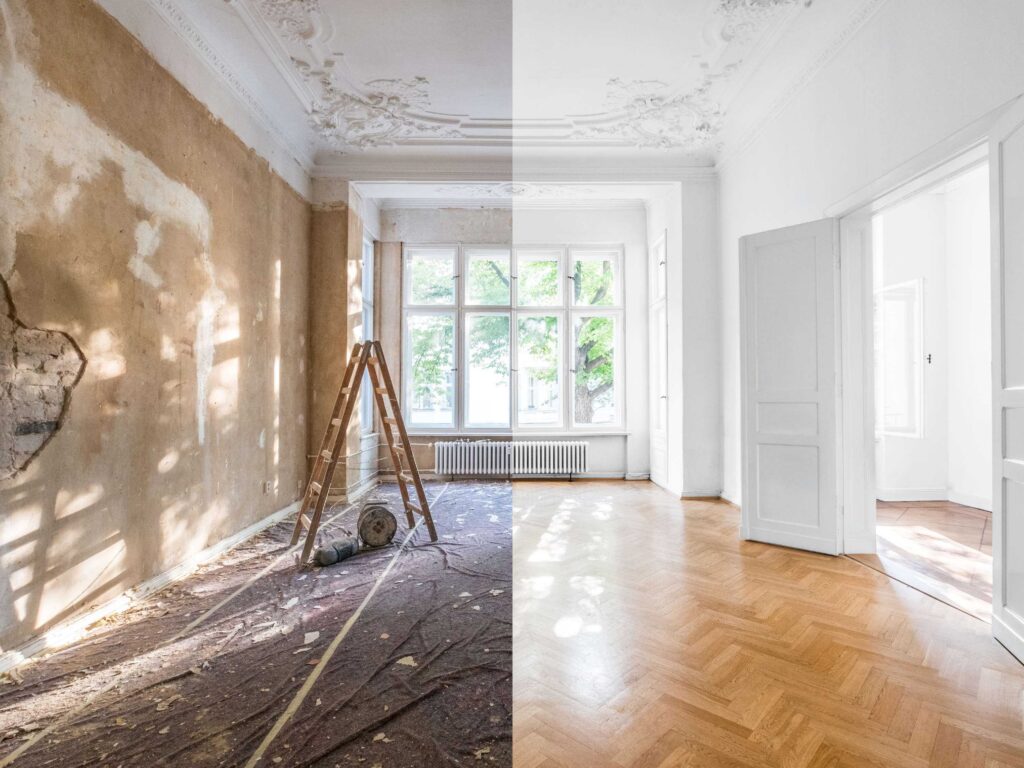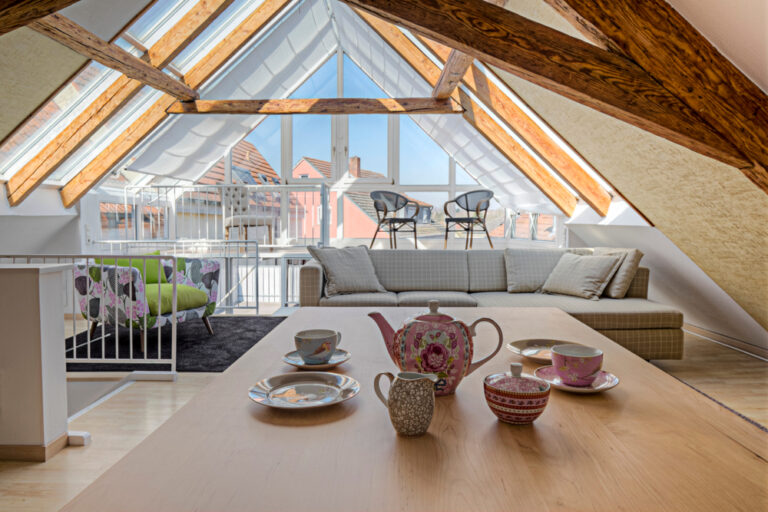Buying and renovating a period property is a great way to combine modern living with a taste of the past.
But if you are considering completing work on a period home from the Victorian, Edwardian, or Georgian eras, there are a number of rules you’ll need to be aware of…
Can you renovate a period property?
Renovation work on period homes can be complex due to the age of these properties.
Victorian and Edwardian homes are more than 100 years old, while some Georgian properties date back as far as 1830 – almost 200 years ago.
As well as issues that arise from their age, period properties may also have been renovated several times already, which can lead to other problems if the work done was not of a high standard.
However, there’s something very special about restoring a period property to its former glory and these homes remain extremely popular with buyers in London.
Renovation rules for period properties
Period properties are sometimes subjected to certain rules when it comes to renovation work.
So, always check with your local authority before starting any work – as a failure to obtain the correct permission to work on your period property could be a criminal offence.
1. Grade II listed property restrictions
Listed buildings are properties of high historical significance and, as such, are protected by certain rules and regulations.
Listed buildings are ranked in three categories, depending on their significance:
- Grade I listed
- Grade II* listed
- Grade II listed
More than 90% of listed buildings are Grade II listed, so if you own a period property of historical significance, there’s a chance it could appear on this list.
If the period home you want to renovate is Grade II listed, you’ll need to apply for listed building consent if the work you’re doing alters or affects the ‘special architectural or historic interest’ of the building.
All listed buildings are unique, so the aspects of the building covered by the listing can vary.
That means it’s crucial to get a breakdown from your local authority before starting any work.
Undertaking work without listed building consent is a criminal offence with a maximum prison sentence of two years and an unlimited fine.
To find out if your property is listed, check online, and if you’re still not sure, contact your local authority for more guidance.
2. Period properties in conservation areas
Conservation areas are designated by local authorities to protect areas of historical and architectural interest.
London has dozens of conservation areas and properties within these areas are subjected to additional rules when it comes to renovations.
Most conservation areas are subjected to an Article 4 directive, which means extensions to properties don’t fall under Permitted Development rights and planning permission is almost always required.
To find out if your property is in a conversation area and for more information on what you can and can’t do, contact your local authority.
3. The Party Wall Act
Period homes, particularly Georgian properties, are often part of long terraces, so any work you carry out at such a property could affect neighbouring houses.
So, if you’re planning work on a property that is linked or close to other homes, you may need to serve your neighbours notice under the Party Wall Act, informing them of the work you plan to do.
You might need a Party Wall agreement if:
- Your property shares a wall with at least one other home (i.e a semi-detached property or one in a terrace)
- Your garden wall is built over a boundary between two properties
- You’re excavating within three to six metres of a neighbouring property
- You’re doing a loft conversion
- You’re installing a new damp-proof course or doing work on the property’s foundations
If you do need a Party Wall agreement, you must give your neighbour(s) two months’ notice of any work that affects the party wall or boundary and one month’s notice for excavation work.
The neighbours then have 14 days to respond, either giving approval or ‘dissenting’ to the work in writing.
In the case of a dissent, you appoint an agreed surveyor alongside your neighbour, who will look at the proposed work and grant an ‘award’ that protects the neighbour’s interests while building work progresses.
4. Planning permission and permitted development
If your property isn’t listed and isn’t in a conservation area, you may be able to do most of your renovation work under permitted development rules.
This means no planning permission is required, but it’s always a good idea to contact your local planning authority and check before undertaking any major work.
Some local authorities may have an Article 4 direction in place restricting permitted development – even if your property isn’t in a conservation area – so checking first is always the best course of action.
5. Building regulations
Building regulations refer to the minimum standards of construction, renovation and design of properties in the UK.
That means you will need building regulations approval for any work you carry out at your period property.
Any structural work or alterations will require building regulations approval, alongside:
- Drainage work
- Installation of heat appliances
- Cavity wall insulation
- New electrics
Most extensions require building regulations approval for structure, energy performance, electrical and gas safety, and fire protection.
Where do you start when renovating an old house?
As well as all the rules surrounding renovations of period properties, you’ll also need to factor in the property’s design history when undertaking work.
Here are our top tips for renovating a period property…
1. Tips for a Victorian house renovation
Victorian properties are packed with history and features that truly make them stand out.
And bringing though features back to life can not only create a wonderful home, but it can also add genuine value to your property.
Always be sympathetic to a property’s history and try to:
- Restore or replace original Victorian features like decorative wall and floor tiles, fireplaces, high skirting boards and decorative mouldings
- Use traditional techniques when plastering or rendering your Victorian property
- Go for heritage colours like rich blues and greens on your walls
- Don’t be afraid to mix the old with the new when it comes to furnishings
2. Tips for an Edwardian house renovation
Edwardian properties arrived after the Victorian era and saw more focus placed on internal space, as well as external features like mock Tudor cladding and wood-framed porches.
When renovating an Edwardian property, try to:
- Restore or replace original features like Parquet flooring
- Use colours that enhance the open feel of Edwardian rooms
- Use shutters in bay windows for additional privacy
3. Tips for a Georgian house renovation
The Georgian period was a major one for property design in the UK.
Symmetrical and glamorous, Georgian homes in London areas like Islington command huge price tags and are in high demand.
When renovating a Georgian home, try to:
- Restore traditional sash windows and other features like cornices and ceiling roses
- Make the most of high ceilings and wide hallways
- Use darker, more traditional shades for a rich interior
- Install a large, wooden front door in vibrant red
Further reading…
A guide to period property in London








